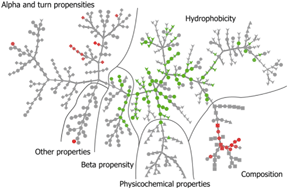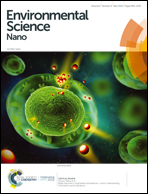Protein corona formed on silver nanoparticles in blood plasma is highly selective and resistant to physicochemical changes of the solution†
Abstract
Nanoparticles (NPs) in contact with protein-containing media such as biological fluids rapidly acquire a surface layer of proteins, known as the protein corona. The protein composition and structural properties of the protein corona are crucial for NP interactions with living cells. Although much has been learned about the protein corona phenomenon, further elucidation could benefit from extensive quantitative proteomics analysis. Herein we report a comprehensive quantitative characterization (>350 proteins) of the corona that formed on 60 nm silver NPs via interaction with human blood plasma, as a function of pH and temperature. By varying the pH and temperature one can access different conformational spaces and charge localizations of the plasma proteins, which in turn provide knowledge pertinent to how the proteome corresponds to binding affinity. Thirty-eight percent of the quantified proteins bind at all temperatures, 47% at all pH values, and of these most persistent proteins, approximately 60% do not significantly change in abundance within the protein corona. Evaluation of 544 protein properties (present in the Kyoto databank) suggests that binding of these proteins to NPs is determined by the extent of hydrophobicity, β-sheet propensity, α-helical structure (and turns), and amino acid composition. Protein binding is promoted by a larger amount of β-sheets, higher hydrophobicity, and a smaller amount of α-helices. Our work enhances researchers' knowledge of a long-standing, vexing aspect of the nano–bio interface.



 Please wait while we load your content...
Please wait while we load your content...